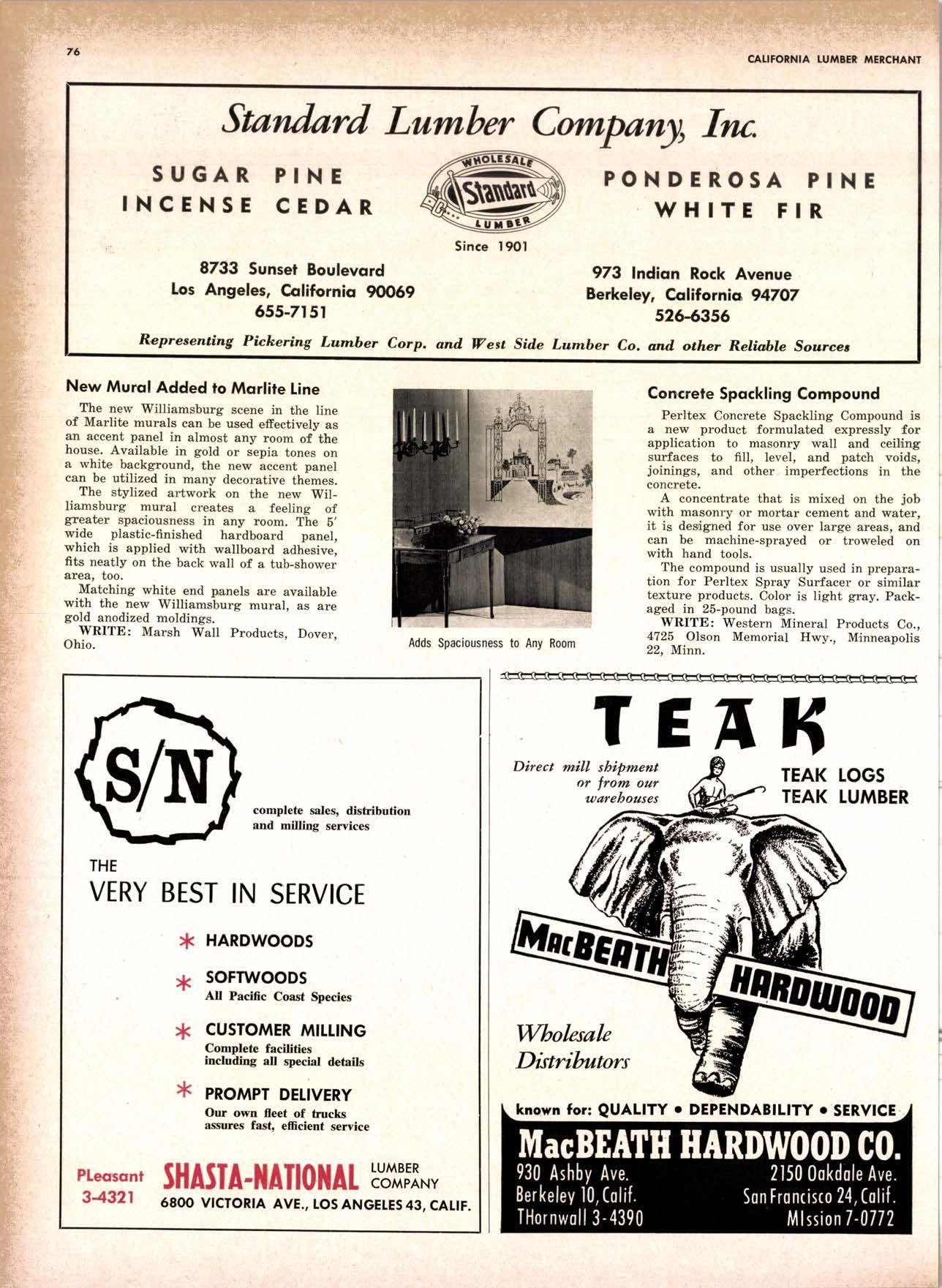
3 minute read
New name, officers, marketing council and the same old fight over standards marks NFPA Meet
LECTION of a new president, approval of a name change and dues adjustment, and announcement of the launching of a new national wood marketing program highlighted the 1965 annual meeting of the old National Lumber Manufacturers Association, May 3-5, in W'ashington, D.C.
The association also acted to advance industry objectives in connection with proposed new lumber standards and forestry matters.
J. B. Edens, president of Southwest Forest Industries, Inc., Phoenix, Ariz., was elected NFPA president for the coming year.
In resolutions taken up the final day of the three-day meeting, NFPA directors: o Changed the association's name, efiective June l, to th,e National Forest Products Association to reflect the broadeninei scope of its activities. a Approved a new dues rate, effective June I, of ll cents per thousand board feet of lumber shipped by memher mills (the old rate was five cents) and voted a proportionate adjustment for member companies paying on a flat dues basis.
The dues adjustment will be used chiefly to finance an ,expanded forestry and government afiairs pro€{ram and to carry on certain functions-mainly building code. fire insurance" engineering and industry relations-partially supported hy the National Wood Promotion Proeram. which was terminatecl \4ay 31.
Wood Marketing Councit
The new national wood marketing program, to be administered hy a Wood Marketing Council operating independently of any industry trade association, is expected to assume advertising. marketing and field promotion activiti,es of the NWPP. Financing will be by direct contributions from lumber manufacturers. distributors. remanufacturers and allied interests.
To help the Wood Marketing Council meet operating expenses while its dues collection machinery is being geared up. NFPA directors approved a resolution ofiering to loan the embryo organization up to $100,000.
An organizational meeting of the Wood Marketing Council will be held in a central location in June. At that time, subscribers will take final action on program details. Preliminary plans propose an assessment of l0 cents per thousand board feet o{ lumber shipped by manu{acturers, with equivalent rates for other supporters.
Standards Issue Gets Atiention
Lumber standards was one of the key issues occupying a major share of the spotlight in the NFPA meetingand a{terwards. Association directors called on the newly reconstituted American Lumber Standards Committee to establish a standard:
(1) relating size to moisture content;
(2) providing for efficient use of wood components;
(3) avoiding complex fractions.
The NFPA-passed resolution said the lr/r-inch dry and equivalent green-size lumber standard best fulfills these requirements. Additionally. the association made a strong appeal to the ALSC to continue its past practice of including "properly
Forestry also came in lor a major share of attention at the meeting, sessions of which were the best attended in the organization's 63-year history. The association strengthened its forest policy on several counts and took the unprecedented action of suggesting the development of rules or standards to govern public-private Iand exchanges.
Other Resotutions
Other resolutions covered a wide range of vital issues currently hefore the forest industries. These actions:
(1) Authorized appointment of a "special committee on compensation for real property acquisition," to suggest possible changes in the laws and regulations in this area.
(2) Urged the federal government to undertake a study of "alternative programs" for the relief of property loss victims of floods and other natural disasters. NFPA said this should include consideration of lederal disaster insurance.
(3) Called {or industry development of counter-proposals to head ofi efiorts to "{ederalize existing private standards bodies."
(4) Backed the present system of regional model huilding codes as superior to a proposed federally-promulgated national 'building code. The present code system, NFPA noted, "ofiers a more democratic procedure . . . a broader latitude of knowledge and experience, and an efficient system for regular review and modernization."
(5) Agreed with Rep. James Roosevelt (D-Calif.) on the desirability of lumber being grademarked at the point of manufacture but said the draft on a Roosevelt bill to make this mandatorv would subiect lumber to "regulation heyond that which applies to other construction materials."
New Officers Etected
identified one-standard sizes in grading rules as an integral part of the voluntary nature oI the standard."
At the same time, NFPA asked Commerce Secretary John T. Connor to (1) "clearly define all the acceptanoe procedures" of his department and the ALSC, and (2) set a "reasonable time limit" for ALSC action on the standards issue.
As NFPA's new president, Edens succeeds Mark Townsend of the Townsend Lumber Co., Stuttgart, Ark., elected board chairman. New first vice president is Gene C. Brewer, president of the U.S. Plywood Corp.
Regional vice presidents for the coming year will be: John S. Richards, president of the Atlas Tie Co., Coeur d'Alene, Idaho; Russell H. Ells, president and general man-
(Continued on Page 83)











